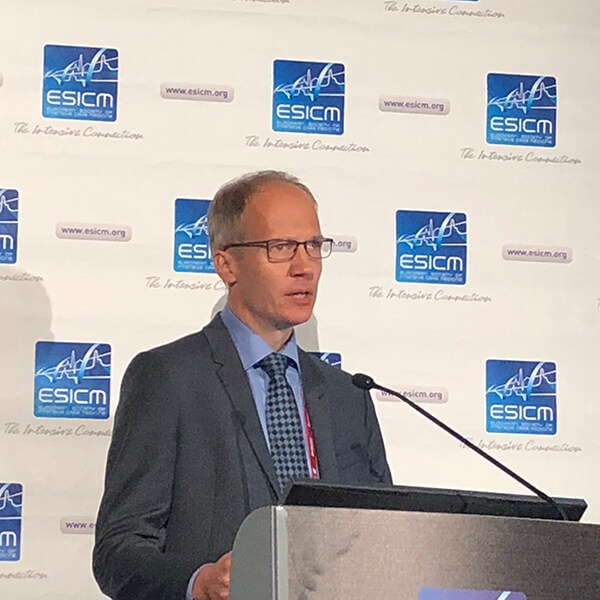DYSPHAGIA PHAST-TRAC STUDY RESULTS AND POST STROKE TREATMENT WITH ELECTRICAL STIMULATION

Prof. Rainer Dziewas
Interview with Professor Dr. Rainer Dziewas. Department of Neurology University Hospital Münster by Natalia Muehlemann, Nestlé Health Science.
From ESICM Paris 23rd October 2018.
NM: Good afternoon. We are here at ESICM Congress in Paris. And I’m here with Professor Rainer Dziewas, who is the Head of Stroke and Neuro-Intensive Care in University Hospital of Műnster, Germany. Professor Dziewas, you just presented the results of the PHAST-TRAC study recently published in Lancet Neurology, could you share the main outcomes of the study design?
RD: Well, the main outcomes of the PHAST-TRAC trial which recruited ………………………….. stroke patients post-ventilation were, first, that using pharyngeal electrical stimulation for three consecutive days, for 10 minutes per day, nearly 50% of patients would be decannulated after stimulation whereas only close to 10% of patients recovered spontaneously during the blinded stage of the trial.
Another key outcome of the study was, second, that there were no device-related adverse events related to the treatment and that serious adverse events that occurred within the trial were evenly distributed between the treatment and the control group.
Third, we found that the stimulation worked particularly well in those patients that were recruited and treated faster after stroke as opposed to later after stroke. Patients with shorter times on mechanical ventilation showed better treatment response than those that were stimulated later after longer periods of mechanical ventilation.
NM: It’s a very impressive result. How would you recommend to clinicians to implement this treatment in a clinical practice?
RD: First, to implement PES in clinical practice, you really need to have a proper dysphagia service and you need to have access to instrumental dysphagia assessment, in particular flexible endoscopic evaluation of swallowing. Then I would suggest to build a team consisting of physicians, neurologists, intensive care physicians and also including speech and language therapists and maybe also dieticians. Then you need to consider which patient group you want to target. And, at the moment, my suggestion is to go for tracheostomised, post-ventilated intensive care patients.
NM: Thank you very much.
END.
